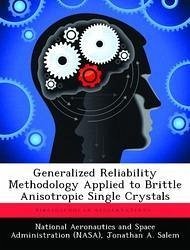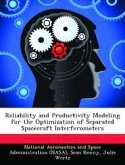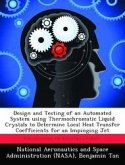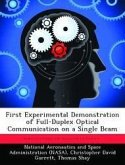A generalized reliability model was developed for use in the design of structural components made from brittle, homogeneous anisotropic materials such as single crystals. The model is based on the Weibull distribution and incorporates a variable strength distribution and any equivalent stress failure criteria. In addition to the reliability model, an energy based failure criterion for elastically anisotropic materials was formulated. The model is different from typical Weibull-based models in that it accounts for strength anisotropy arising from fracture toughness anisotropy and thereby allows for strength and reliability predictions of brittle, anisotropic single crystals subjected to multiaxial stresses. The model is also applicable to elastically isotropic materials exhibiting strength anisotropy due to an anisotropic distribution of flaws. In order to develop and experimentally verify the model, the uniaxial and biaxial strengths of a single crystal nickel aluminide were measured. The uniaxial strengths of the <100> and <110> crystal directions were measured in three and four-point flexure. The biaxial strength was measured by subjecting <100> plates to a uniform pressure in a test apparatus that was developed and experimentally verified. The biaxial strengths of the single crystal plates were estimated by extending and verifying the displacement solution for a circular, anisotropic plate to the case of a variable radius and thickness. The best correlation between the experimental strength data and the model predictions occurred when an anisotropic stress analysis was combined with the normal stress criterion and the strength parameters associated with the <110> crystal direction.
Hinweis: Dieser Artikel kann nur an eine deutsche Lieferadresse ausgeliefert werden.
Hinweis: Dieser Artikel kann nur an eine deutsche Lieferadresse ausgeliefert werden.








